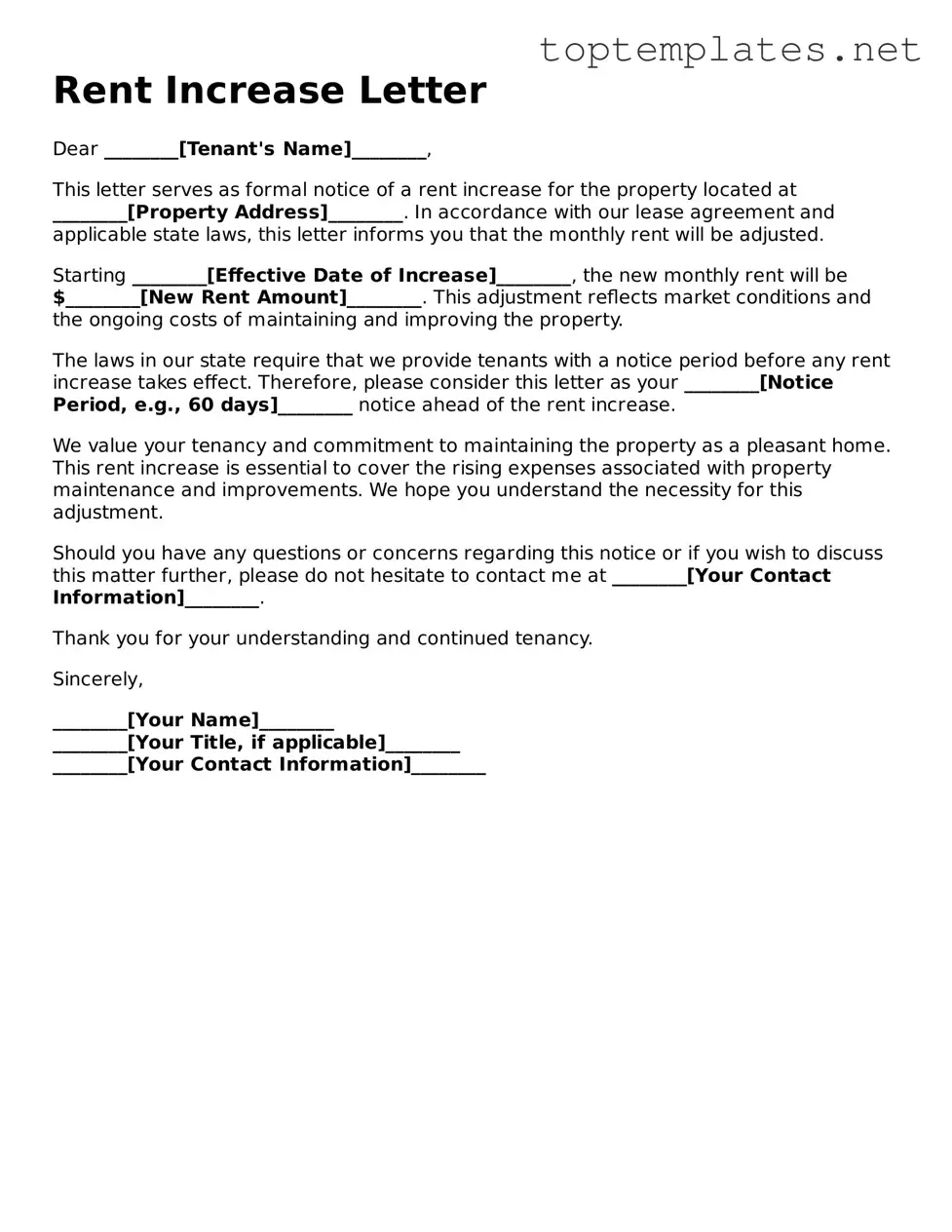What is a Rent Increase Letter?
A Rent Increase Letter is a formal notification sent by a landlord to a tenant, advising of an upcoming increase in rent. This document provides all the relevant details, including the amount of the increase, the new rent amount, and the effective date of the new rent.
When should a Rent Increase Letter be sent?
Timing varies by jurisdiction, but typically, a Rent Increase Letter should be sent 30 to 60 days before the lease's current term ends or before the proposed increase is to take effect. This advance notice gives tenants adequate time to consider their options, be it accepting the new terms or looking for alternative housing.
Is there a legal requirement for sending a Rent Increase Letter?
Yes, in most places, landlords are legally required to provide tenants with a written notice of any rent increase. The precise requirements, including notice period and whether the increase is subject to any caps, depend on local laws and ordinances. Failure to comply can lead to legal issues and restrictions on enforcing the increase.
What should be included in a Rent Increase Letter?
The letter should clearly outline the amount of the rent increase, the new rental amount, and when this new amount is due. Additionally, it should reference the exact clause in the lease agreement that permits the rent change. Providing contact information for further discussions or questions is also advisable.
Can a tenant refuse a rent increase?
Tenants can negotiate or contest a rent increase, but ultimately, if the increase is within legal limits and proper notice has been given, they may have to accept the increase or choose to vacate the premises. Tenants also have the right to verify that the increase complies with any applicable rent control laws.
What happens if a tenant does not agree with the rent increase?
If a tenant does not agree with the rent increase and it is found to be lawful, they generally have two options: to discuss and potentially negotiate the raise with the landlord or to look for another place to live. If they believe the increase is not compliant with local rent control laws, they may seek legal advice.
Can a Rent Increase Letter be delivered electronically?
Depending on the jurisdiction, rent increase letters may be delivered electronically if electronic communications are explicitly permitted by the lease agreement, or if local laws allow for such notices to be given electronically. Always verify the local regulations before sending a rent increase notice electronically.
How can a landlord ensure the Rent Increase Letter is legally compliant?
Landlords should familiarize themselves with local and state laws governing rental increases and ensure their notice meets all legal requirements. This includes observing the correct notice period, not exceeding any maximum allowed increases, and following the lease terms. When in doubt, consulting with a legal professional can help ensure compliance.
What should a tenant do upon receiving a Rent Increase Letter?
Upon receiving a Rent Increase Letter, a tenant should first review their lease agreement to confirm the landlord is adhering to the terms outlined, including the amount of notice given and the terms under which rent can be increased. If everything is in order, the tenant can decide whether to accept the new rent amount or to move out. If there are discrepancies or concerns, the tenant should address them with the landlord or seek legal advice.
